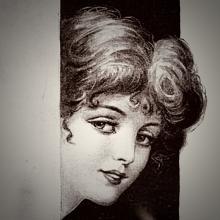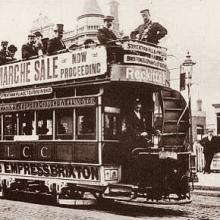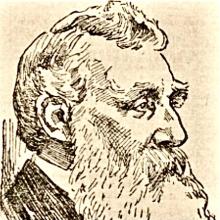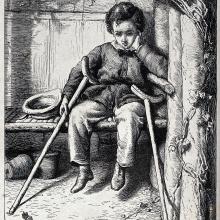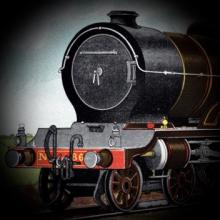
*****
FATAL ACCIDENT AT WAVERLEY STATION.
OLD MAN’S TERRIBLE DEATH.
This morning, a particularly sad accident occurred at the Waverley Station, Edinburgh, resulting in the death of an old man of about 70, who had spent the best part of his life working the Waverley.
The man—James Cassie, residing at 9 Queensferry Street Lane, Edinburgh—was employed as shunter, and was working at the east end of number 2 platform, when he was knocked down by a pilot engine.
He was shockingly injured. The wheels passed over his legs, both of which were severed from the body. In a dying condition the old man was conveyed to Edinburgh Royal Infirmary, where death took place almost immediately after admission.
Edinburgh Evening News, 2 October 1906
*****
ALLEGED ATTEMPTED BURGLARY EDINBURGH.
EXCITING CHASE IN BROUGHTON.
After an exciting chase a man who, it is alleged, attempted to break into premises at 9 Barony Street, Edinburgh, on Saturday night, was captured at Broughton Street and handed over to the police.
The premises at Barony Street are occupied Mr James A. Inkster, draper, who was in the shop along with Mrs inkster and his assistant. A sound proceeding from the back of the shop caught their ears, and listening intently they heard a window in the bedroom at the back being raised. Going into the room they opened the inside shutter of the window and saw a man instantly drop off the into the back green.
Mr Inkster and his assistant ran out to the side passage to try to stop him, but he had been too quick for them and had got clear on to the street. They gave chase and kept him in sight till he rushed towards Albany Street. Following in hot pursuit through New Broughton and York Lane, and back, they got hold of him at the corner of Broughton Street and Albany Street.
At the Police Office he said his name was James Bryce, painter, and that he resided at 9 Buccleuch Street. Bryce, who has been previously convicted, was brought before Bailie Inches at Edinburgh City Police Court to-day, and was remitted to a higher court.
Edinburgh Evening News, 8 October 1906
*****
Live Stock and Vehicles
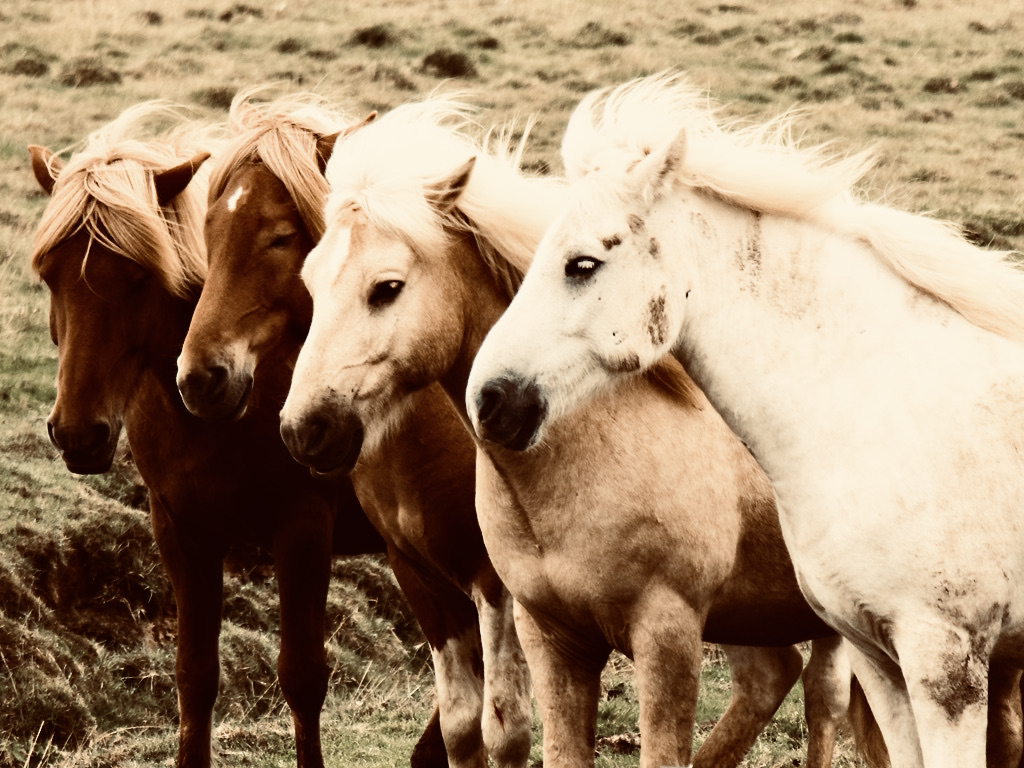
ARRIVED.—Arrived, a consignment of 20 strong, hardy Iceland ponies; all good ages and colours; prices from £4 to £7; decided bargains to clear.—T. Steele, Dublin Street Lane.[1]
IRISH car, in good order, genteel colour; also set B. harness.—4 Dean Park Mews.
Edinburgh Evening News, 13 October 1906
[1] Image: Wikipedia, Creative Commons.
*****
MOTOR CAR PROSECUTION IN EDINBURGH.
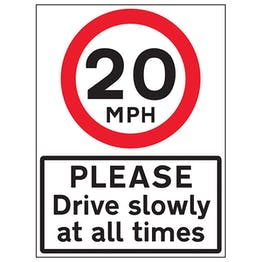
In Edinburgh Sheriff Court this forenoon, before Sheriff Gardner Miller, Albert Billet, motor car driver, residing at Church Lane, Edinburgh, was charged with having, on the 25th September, on the road through the village of Straiton, driven a motor car at a rate exceeding the legal limit of 20 miles per hour. Accused pleaded not guilty, and evidence was taken.
It was stated that the police and the road surveyor, on account of complaints by the inhabitants the village, had on this particular occasion timed the rate of the motor, which showed that it was going beyond the legal limit, the calculation being 25½ miles per hour.The respondent said he was not going at a speed of more than 17 miles an hour.
After the case had been debated at great length by the agents on both sides, the Sheriff said was satisfied with the evidence of the police, and accordingly found the charge proven, and imposed a fine of £3, with the option of 10 days’ imprisonment.
Edinburgh Evening News, 26 October 1906
*****
THE RIVAL SITES FOR THE ROYAL SOCIETY.
The influential deputation representing the Royal Society of Edinburgh, which waited upon the Secretary for Scotland in London yesterday, expressed pretty strongly their opposition to the site proposed for the new buildings to be erected by the Government in lieu of those at present occupied by the learned Society on the Mound.[2]
The site which has been recommended to the Government by their architectural advisers is 14 Queen Street, and the buildings, which extend back to North-East Thistle Street Lane, were occupied by the Caledonian United Service Club before they removed to the new premises at the West End of Princes Street.
Sir Wm. Turner, who spoke for the Society, objected to yielding their great historical position in one of the most stately buildings in Edinburgh, to be sent away to a back lane, among warehouses and stores, and in close proximity to a chemist’s warehouse, which with its highly inflammable contents would place their valuable library in great danger.
The Society favoured another site in George Street which, it was said, would cost very little more than the Queen Street site, in view of the sum of money that was to be paid for putting the latter site in proper order.
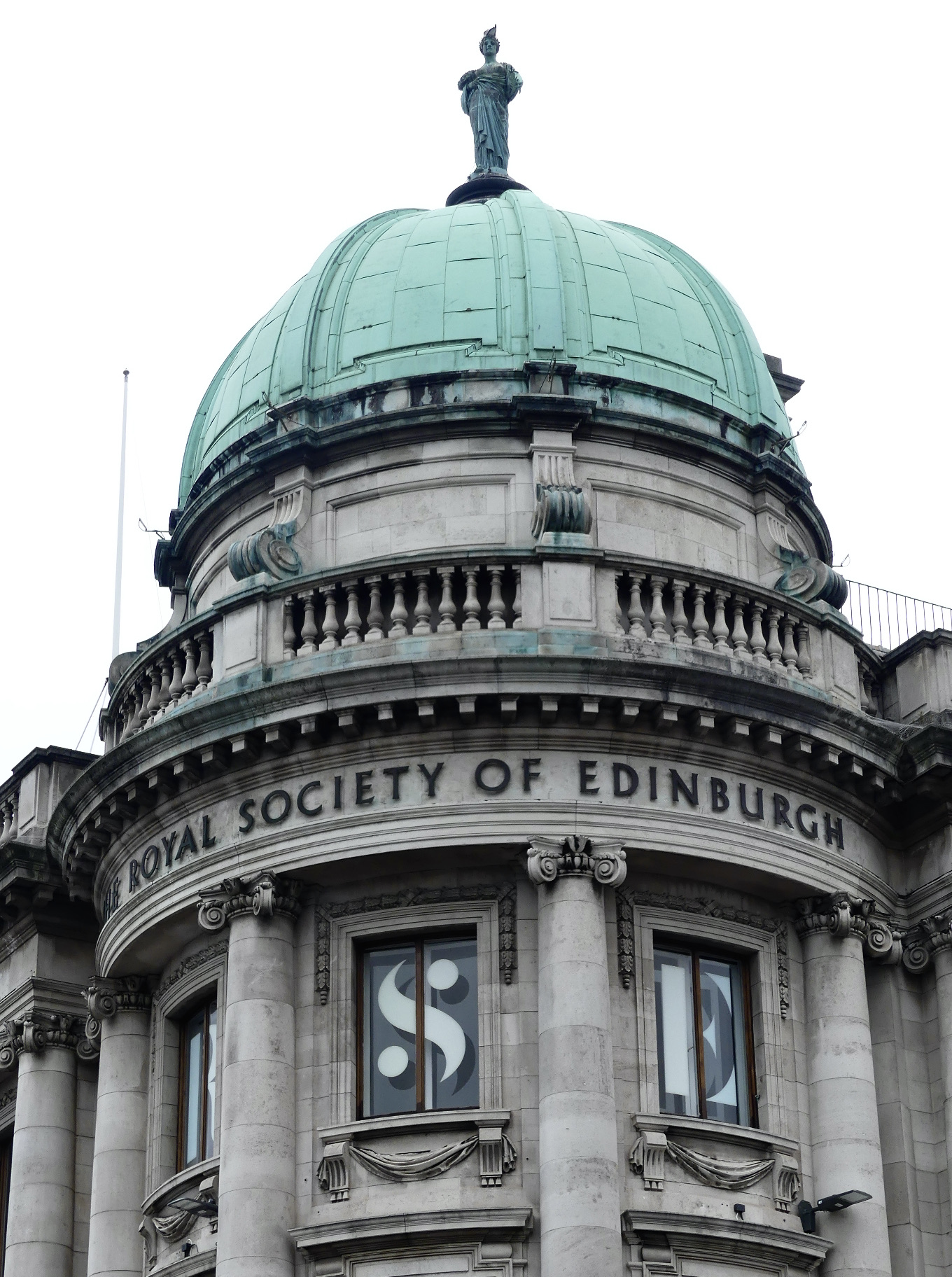
The George Street building suggested is that occupied by the Edinburgh Life Assurance Company, who, it is understood, are willing to sell in view of the erection of more suitable premises for themselves. It has been estimated on behalf of the Government that the cost of the buildings in Queen Street, including the alterations necessary, would run to about £17,000 or £l8,OOO, whereas the probable cost of the George Street buildings is set down at about £25,000. It is stated also that the accommodation in the George Street buildings would be something like fifty per cent. less than in Queen Street.
It is described as rather a misnomer to say that the Queen Street site is a back lane. No doubt the lane, with its warehouses, runs along the rear of the buildings, but there is a fine frontage to that handsome thoroughfare, Queen Street. It is also objected that the Queen Street site is not sufficiently central. Against that, however, it is pointed out that the distance between the east end of George Street and the east end of Queen Street, which run parallel, is trifling.
Edinburgh Evening News, 23 November 1906
[2] Since 1826, the RSE had shared apartments in the Royal Institution on the Mound (today's Royal Scottish Academy) with the Society of Antiquaries. It eventually moved to its current premises on George Street in 1909.
*****
STRAYED from 1 Douglas Garden Mews, Belford Road, small black-and-tan Yorkshire terrier; necklace with coin attached; answers to Punch.—Reward, A. Smith.
Edinburgh Evening News, 17 December 1906
*****
CHRISTMAS CELEBRATIONS AT DEAN BANK INSTITUTION.
A Christmas celebration meeting was held this forenoon at the Dean Bank Institution for the training of girls in 6 Dean Bank Lane, Stockbridge.[3] Lord Provost Gibson presided over a fair gathering, among whom were Councillor M’Arthy and the Rev. George Steven, M.A.
In his opening remarks the Lord Provost wished the compliments of the season to the children and those interested in the work of the Institution. He was there officially as the president of the Corporation because the Corporation recognised all such good institutions. The main object of the Institution was to train the girls with a view to entering into domestic service, which was considered a most important factor in the well-being of the community. Not only were the girls there to learn domestic service for the help of others but to be able to conduct their own households.
Another satisfactory factor was that the Dean Bank Home was not a purely charitable institution, but was a self-help one. The grants from the Town Council and other charitable sources amounted to £233, while from relatives of the children and friends £159 had been subscribed. Surely, when more than half the expenses of the Institution were borne by relatives and people interested, it was a guarantee that much interest was centred in the home.
He had noticed that the directors had agreed to come under the Charity Organisation Society. He hoped the public Edinburgh in future would contribute more to the expenditure of this institution than they had done in the past.
At present there were 33 girls in the home, and these the doctor had pronounced as very healthy. Sickness had been very slight during the past year. He was glad to learn that the report of the headmaster of Flora Stevenson School, where most of the children attend, was a very satisfactory one; and, in conclusion, he complimented the children on their singing capabilities.
Christmas gifts from the directors of the Institution were then presented to the children, and the company adjourned to the hall, where a Christmas dinner was served.
Edinburgh Evening News, 27 December 1906
[3] Set up in 1832, the Dean Bank Institution for the Reformation of Female Juvenile Delinquents initially worked with girls who had recently been released from prison before switching to a preventative approach. In 1870, its name changed to the Dean Bank Institution for the Religious, Moral, and Industrial Training of Girls. 'By 1884, the Institution was described as taking "neglected destitute girls, and those on the verge of crime". A payment of 2s. 6d. was requested for each girl placed, although exceptional cases were received free. The inmates were mainly occupied in washing and laundry work.' (Children's Homes, accessed 9.7.21). In 1913, the institution was adopted by the Edinburgh School Board and transferred to new premises in Morningside.
